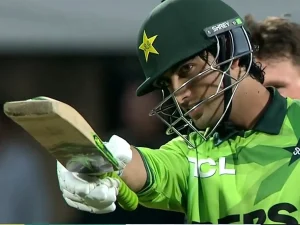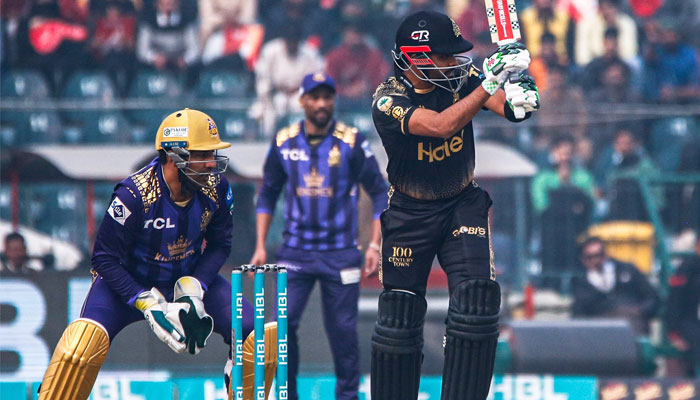Cricket is not just a sport in Pakistan—it is a passion that connects millions of people. From the streets of Karachi to the mountains of Gilgit, young boys and girls dream of representing Pakistan on the international stage. From winning the 1992 World Cup to the 2017 Champions Trophy, the country has proven its talent on the world stage. However, inconsistency, mismanagement, and lack of infrastructure have held the team back in recent years.
 Pakistan’s cricket team has always been full of surprises. One day, they stun the world with a brilliant performance, and the next, they disappoint their fans. As 2025 begins, a resurgence is expected in Pakistan’s cricket field. Because Pakistan is determined to build a stronger, more consistent team. The question on every cricket fan’s mind is:
Pakistan’s cricket team has always been full of surprises. One day, they stun the world with a brilliant performance, and the next, they disappoint their fans. As 2025 begins, a resurgence is expected in Pakistan’s cricket field. Because Pakistan is determined to build a stronger, more consistent team. The question on every cricket fan’s mind is:
Can this year mark a new era for Pakistan’s cricket?
With new talent emerging, improved domestic systems, and international teams returning to Pakistan, the country’s cricketing future looks bright. But what challenges remain, and what steps need to be taken to ensure long-term success?
Pakistan’s Performance on the International Stage
Pakistan’s national team has always been known for its unpredictability—capable of defeating the strongest teams one day and losing to weaker opponents the next. However, in the past few years, there have been signs of greater consistency. Pakistan has struggled in Test cricket, especially in away conditions. However, with players like Babar Azam, Shaheen Afridi, and young talents such as Saud Shakeel and Aamer Jamal, the team is always working towards building a strong Test squad.
Pakistan’s strength has traditionally been in ODIs and T20s. With the 2026 T20 World Cup approaching, the team is focused on assembling a competitive squad. The return of PSL stars to international cricket has given Pakistans resurgence with more firepower, but squad selection and middle-order stability remain key concerns.
Women’s cricket in Pakistan has seen significant improvement. With players like Nida Dar and Fatima Sana making a mark, Pakistan’s women’s team is aiming to compete at a higher level. More investment in women’s domestic leagues and international exposure will be crucial for future success.
 PSL: A Driving Force in Pakistan’s Cricket
PSL: A Driving Force in Pakistan’s Cricket
The Pakistan Super League (PSL) has been instrumental in discovering fresh talent. Since its inception in 2016, the league has given Pakistan players like Shadab Khan, Haris Rauf, and Mohammad Haris. The 2025 edition is expected to be again a resurgence of cricket in Pakistan which will be bigger than ever, with expanded international participation and matches in more cities. PSL not only strengthens Pakistan’s cricket but also contributes to the economy and enhances the country’s image. If it continues to grow, it could soon rival top T20 leagues like the IPL and Big Bash.
Challenges Facing Pakistan Cricket
Despite recent improvements, Pakistan cricket still faces several challenges:
- Inconsistent Team Selection: Frequent changes in team leadership and selection policies create instability. A long-term plan is needed to build a balanced squad.
- Lack of Test Matches: Compared to other leading cricketing nations, Pakistan plays fewer Test matches, reducing opportunities for players to develop in the longest format of the game. Increasing Test fixtures, particularly against strong opponents, will be crucial for long-term growth.
- Weak Domestic Infrastructure: While the PSL has contributed significantly to player development, Pakistan’s domestic cricket structure still requires substantial improvements in terms of stadium facilities, coaching programs, and financial incentives for players.
- Security Concerns and International Tours: Although international teams have resumed tours to Pakistan, security concerns remain a challenge. Ensuring a safe and well-organized environment for international matches is essential to maintain the return of global cricket to the country.
Can 2025 Results in Resurgence for Pakistan Cricket?
To make 2025 a defining year for the Pakistan’s cricket history, a resurgence consisting of several critical steps is needed to be taken. First, young talent needs more support through better training, facilities, and chances to play at the international level. Secondly, revamping the domestic cricket structure by enhancing pitch quality, increasing match fees for local players, and making the domestic circuit more competitive will create a stronger talent pipeline. Expanding women’s cricket is equally important. In Pakistan Women cricket resurgence also need to be done. done. Women’s cricket should also get a boost with a Women’s PSL and more international matches to help the team perform better. Hosting more international matches will improve Pakistan’s reputation and give local players valuable experience. Lastly, team selection and leadership should be more stable, with fewer sudden changes, so the team can grow stronger over time.
 Conclusion
Conclusion
Pakistan cricket has seen many highs and lows, it is a rollercoaster journey filled with moments of brilliance and periods of struggle. However, 2025 has the potential to be a breakthrough year for the national team. A resurgence is expected in cricket field. With a new generation of skilled players, a rapidly growing PSL, and increasing global recognition, Pakistan has the potential to cement its place among the top cricketing nations. More focus should also be placed on physical and mental training to improve player endurance and performance. Instead of prioritizing advertisements and endorsements, cricketers must dedicate themselves fully to the game to ensure consistent results on the field. If Pakistan takes the right steps now, the coming years could bring an era of dominance—filled with major tournament wins, iconic cricketers, and thrilling moments for fans across the world.
The big question is: Can 2025 mark the beginning of a new and brighter chapter in Pakistan cricket?
Fizza Raza | Intern, Press Network of Pakistan
This post has been submitted by one of our interns. PNP Internship Program is an exciting career opportunity for Pakistani university students to get hands-on valuable experience required in national and international job market.
In order to ensure transparency, accuracy and accountability to our readership, please report whenever any error found or need to clarify /correct the post.



